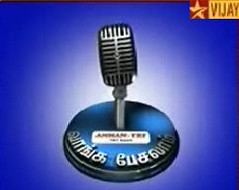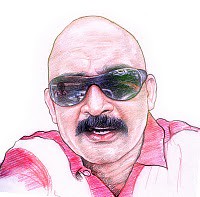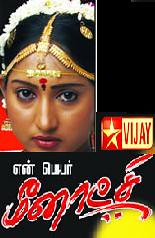By Star India president (South) Jagdish Kumar
2009 began ominously with dark clouds looming in the aftermath of the meltdown of financial markets
in the US. In the midst of this turbulence, Star India was on the verge of concluding a very significant and strategic deal in its history - the acquisition of Asianet channels in South India. Having worked on the deal negotiations and complicated regulatory processes for over a year, it was frustrating to hear many doomsday prophets questioning the rationale for making large investments in an under developed media market when businesses across the world were experiencing a severe liquidity crunch. Conventional wisdom said corporate USA will conserve cash and any new investment proposal will either be deferred or cancelled.
However defying conventional wisdom, we just got the deal done! Star India's long term commitment to the media market in India was reinforced when on 9 January 2009 Star network's footprint expanded to cover all of South India with the acquisition of channels in Malayalam, Kannada and Telugu. This step from Star truly represents the adage: when the going gets tough, the tough get going! There was never a doubt in any of our minds that the value we derived from acquiring Asianet far out-weighed the price we paid for it. Hence while most media companies in India started 2009 with either downscaling/terminating of operations or approaching the market with hesitation and extreme caution, Star started the year with renewed vigour and hope. With its expanded footprint over non-Hindi regional language markets, Star is currently the biggest television network in India with access to 130 million viewers.
South India is home to 45 per cent of the cable & satellite homes in India. The region is witnessing tremendous economic progress with per capita incomes far higher than the national average. For various reasons, Star had been guilty of ignoring the South Indian market with the exception of Tamil Nadu where its Tamil language channel Vijay TV has been delighting Tamil viewers with innovative content. The network of channels in Star's current portfolio consists of a mix of businesses at varying positions in each of the markets:
* In Malayalam, Asianet is the leading channel
* In Tamil, Star Vijay is a challenger channel with its own distinctive brand
* In Kannada, Suvarna is fighting a close battle with the leading channels
* In Telugu, Sitara is still taking baby steps.
What have we learnt from 2009?
When one looks back at the year gone by, there are 5 themes which strike out:
1. South India is not one market; it consists of numerous distinct markets:
Each of the language markets in Kannada, Malayalam, Tamil and Telugu have distinctive characteristics which sets them apart from each other significantly. Even within the main language markets, there are internal differences which cannot be ignored by television broadcasters.
Karnataka is a good example to illustrate the multi-faceted features of the market. Besides Kannada language speakers, Karnataka is also home to people who speak Coorgi, Tulu and Konkani. Each of these languages is spoken by people who are proud of their own long history and culture. Furthermore parts of Karnataka in northern, eastern and southern borders of the state have a large populace who are influenced by Marathi, Telugu and Tamil respectively. The capital city Bengaluru has developed into a microcosm of India with people from all over the nation making it their home. Kannada language speakers are a minority in Bangalore.
Television broadcasters have to factor in the diversity of the market in all their programming and marketing decisions. It is perilous to consider the market as homogenous.
2. Content needs constant innovation with a blend of tradition and contemporariness:
The significant earning and consuming populace of the region (25 years and above) are people who grew up in the traditional and conservative environment of the 1980s and 1990s. At the same time they are also modern and contemporary in their attitudes which come along with the economic prosperity the region is experiencing. Television viewers who are entertained by religious/mythological content are also equally captivated by a talk show which is anchored by a transgender host.
Television broadcasters have to master the art of being a jack of all trades and master of none.
3. It's distribution, distribution and distribution:
South Indian states have always had the highest penetration of cable & satellite homes in India. With increasing importance of the tier 2 and tier 3 towns, distribution presents immense challenges.
Each of the regional markets in the South have numerous competing local channels which are backed by political interest and local businessmen. This has created a huge demand and supply mis-match for analogue cable bandwidth. While the distribution market is trending towards consolidation, it is still characterized by territory wars between the major multi-system operators (MSOs). Local cable operators (LCOs) are offered television signals either free or with huge discounts. Such predatory pricing by competing MSOs results in blockage of subscription revenues at the LCO level. In order to compensate for lack of subscription revenues, MSOs are forced to charge exorbitant prices for carriage and placement.
Television broadcasters face huge challenges in getting distribution. The pay TV market is fraught with risks associated with poor cash collections.
4. Today’s leader could be tomorrow’s challenger:
For a long period of time, each of the markets had a dominant leader and a there was a huge distance between the leader and second ranked channels. The Sun network channels dominate the markets in Tamil Nadu, Andhra Pradesh and Karnataka and the Kerala market is dominated by Asianet.
With the proliferation of channels in each of the markets, the gap between the leader and the challengers is decreasing. With the exception of Tamil Nadu where Sun TV continues to maintain a massive lead over the next best channel, the other markets are witnessing healthy competition in the leadership stakes. Incumbent leading channels in non-Tamil markets are experiencing viewer fatigue with long running fiction serials and audiences are willing to experiment with fresh concepts.
Television broadcasters have to plan “disruption” in programming and scheduling in order to make inroads into the market. The audience is ready for the next big idea.
5. Movies can make or break channels:
South India has a prolific movie industry. 70 per cent of the annual production of approximately 1000 movies in India is produced in South Indian languages. Movies constitute more than 50 per cent of the GRPs of most of the channels. All major networks in South India have created entry barriers by acquiring movie libraries on a long term basis.
Movies are an essential weapon in a broadcaster’s armoury. Movies are extensively used to attract audiences; thwart competition; promote programming and boost ratings.
Crystal gazing into 2010
2010 promises to be an exciting year for the Star network in South India. We are looking forward to strengthening our presence in South India. The challenges in 2010 for television channels in South India will be the following:
1. Diversified distribution due to the increased penetration of digital boxes (cable and DTH):
Increasing penetration of digital boxes by DTH players led by Sun Direct will provide numerous opportunities for television channels to reach their audiences. This will open avenues for content providers to monetize niche content. Competition from DTH players is also driving cable networks to install digital boxes to cable subscribers. The surge in addressability by the penetration of cable and DTH digital boxes augurs well for television channels.
2. Shorter lifecycle of programs and increasing churn of audiences:
Television audiences are becoming increasingly impatient and the days of long running serials are coming to an end. The market is waiting to see freshness and innovation in content. Television channels have to constantly look to renew their offerings.
3. MSOs will start consolidating and reduction of territory wars in cable:
MSOs are entering a period where their equity masters (private and public) are pursuing positive cash flows. Hence the era of easy money availability for network acquisition/operations will come to an end. This implies that MSOs will have to consolidate and entrench themselves deeper into their own territories rather than encroach on other MSOs' territories.
4. Talent wars:
Good talent in all aspects of the television business will be scarce. Finding and retaining talent will make the difference between leaders and challengers.
Content courtesy - Indiantelevision
 This week Vijay TV Adhu Idhu Edhu show "Goa Team" Director Venkat Prabhu, Actors Sneha and Aravind Akash. They would be performing to three different rounds – ‘Group – le-dupe –u’, ‘Siricha pochu’ and ‘Poi solla porom’. The elevator arrives with a group of three members from the same background, (3 conductors / 3 vets / 3 lady cops / 3 karattae artists etc.,).
This week Vijay TV Adhu Idhu Edhu show "Goa Team" Director Venkat Prabhu, Actors Sneha and Aravind Akash. They would be performing to three different rounds – ‘Group – le-dupe –u’, ‘Siricha pochu’ and ‘Poi solla porom’. The elevator arrives with a group of three members from the same background, (3 conductors / 3 vets / 3 lady cops / 3 karattae artists etc.,).

















